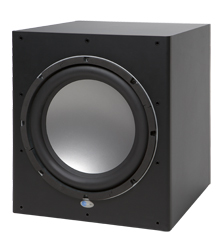Confusion: LFE, Subwoofer & Bass-Management?
July 4, 2008
When talking to people about 5.1 audio, one of the more common problems in helping people understand certain concepts, is the confusion involving some of the basic terminology.
What is the .1 / LFE Channel and why does it exist?
The .1 or LFE is a channel which is exclusively used for frequencies below 120Hz (below 80Hz for DTS). It is therefore a bandwidth limited channel, but it is not the same as the subwoofer, which is the speaker that typically reproduces the LFE channel in a home audio or studio monitoring system (more information is provided below). The purpose of this channel is to provide an additional 10dB of electrical headroom, for low frequencies, above the main channels. This is done by calibrating the acoustic playback level, so that it has 10dB of in-band gain above the other channels (fronts and surrounds).
Click this link to view an image showing how the LFE is calibrated relative to the main channels.
The LFE channel was officially launched as part of the film version of Dolby Digital, although its lineage actually dates back to six track 70mm soundtracks, and was mainly designed to enhance low frequency sound effects, such as large explosions and other low frequency content, which exceeded the headroom of the main channels. Hence the name LFE, or Low Frequency Effects, and not low frequency bass channel. It is important to note that all of the five main channels in a 5.1 delivery format, such as Dolby Digital or DTS, are capable of handling full-range audio (20Hz to 20kHz) on their own, without using the LFE channel. Because of this, the LFE channel isn’t always used, as it is not required for full-range audio.
Typically, unless the recording is something like Tchaikovsky’s 1812 Overture and is recorded with REAL cannons, the LFE doesn’t need to be used in most music applications, but can be useful in film and multimedia applications where dramatic low frequency effects are often important (explosions etc.)
AN IMPORTANT NOTE: Depending on the playback system, such as when a two channel system is being used instead of a full 5.1 system, the Dolby Digital decoder may drop the LFE channel completely (poof!). Therefore persons creating a Dolby Digital mix should not put relevant audio content exclusively in the LFE channel.
OK, so if the LFE is a channel and the subwoofer reproduces this channel, what is bass-management and how does it fit in to the equation?
Bass management uses filters to extract low frequency information from the five main channels and then reroutes that information, along with the LFE Channel in a 5.1 system, to a mono subwoofer (multiple SUBs can be used for higher SPL, or to improve frequency response over a wider area).
A ‘typical’ bass-management signal flow diagram can be seen by clicking this link.
Bass-management is a function of the playback or monitoring system, in the same way that a crossover inside a speaker is part of the playback or monitoring system. It is a somewhat confusing name, for something that is basically a summation and crossover network – no more, no less.
The reasons for using bass-management are pretty simple: It extends the frequency response of speakers that are not capable of reproducing full-range audio. Since most 2-way speakers and studio monitors aren’t full-range and most modern recordings are, we feel bass-management, in combination with a subwoofer, is an extremely useful technology.
Click this link to again view the calibration diagram, which was also linked in the previous section. This time take note of how the bass-managed subwoofer signal is calibrated to splice in and extend the response of the each of the main channel speakers.
So what is the correct bass-management crossover frequency for my surround system?
Because bass-management is a function of the speaker system, determining the best bass-management crossover frequency for your audio system is completely dependent on the type of speakers and subwoofer you are using.  If you are using a THX Certified home theater speaker system, or a THX pm3 approved studio monitoring system, then an 80Hz setting is typically desirable. This is also the default setting for THX receivers, THX controllers and Blue Sky’s BMC MK II.
If you are not using a THX Certified or pm3 approved system, then you will need to check with the manufacturer of the speakers you are using to see which crossover frequency setting is correct.Â
Additional notes:
- Certain receivers and controllers offer expanded options with regard to filter settings. These settings may include individual controls for high pass and low pass filters. For a THX Certified speaker system, or THX pm3 approved monitoring system, these should be set to; 80Hz, 12dB per octave High Pass and 24dB per octave Low Pass.  Again, if you don’t have THX certified or pm3 approved speakers, check with the manufacturer of your speakers to see which settings you should use.
- For additional information about the benefits of using bass-management and why it is incorporated into every Blue Sky monitoring system, please follow this link.
- For more information about Dolby, please visit www.dolby.com
- For more information about DTS, please visit www.dts.com
- For more information about THX, please visit www.thx.com
If you have comments, questions or suggestions, please don’t hesitate to contact ADL, or post them below in the comments section.



